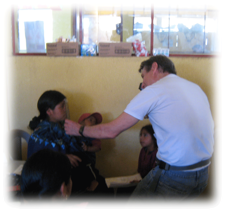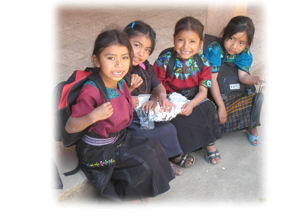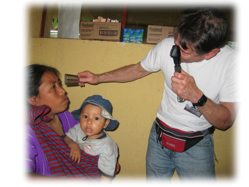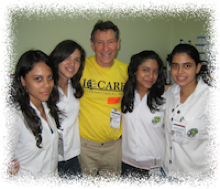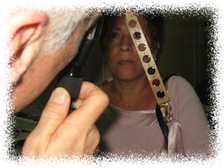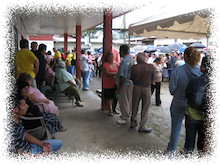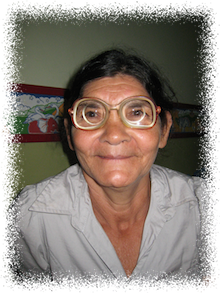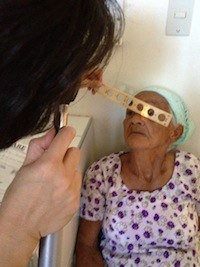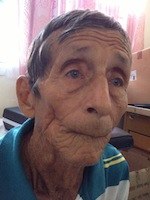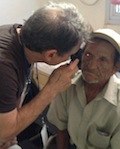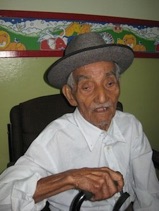Mission to Peru 2015

DAY 2: Just completed our second day of clinic. Laying down never felt so good. Saw 575 patients in 2 days. The clinic is working out of an orphanage so we're seeing a disproportionate # of children. So well behaved. We have several optometric students with is in addition to an ophthalmic surgeon. Hard working and fun group. Danny fits in well. More to come
DAY 3: Today we completed our 3rd full day in clinic in this out of the way Peruvian town of Pachacamac. Our van pulled up to the orphanage at 8 am to the sight of hundreds of eagerly waiting patients, most of whom had been waiting since 4 am for eye care. As always, our group seems to find ways to get the job done but I'll admit, the sight is intimidating. As usual we broke into stations for personal history, visual acuity testing, ocular health and refractive error and finally dispensing. We did survive a mini crisis when we lost the use of our portable instrument for over an hour. Working without our modern equipment forces me to draw on skills I haven't needed in years.
The experience is as rewarding as ever, the location in Peru adds interest and having my son, Dan with me is an extra bonus.


Our group was treated to experiences with new foods and beverages including blue drinks with purple corn as the main ingredient. We've been in commuter traffic which makes the 405 seem like the autobahn. Peruvian 3 wheel taxis are unaffectionately referred to as the "coffin on wheels".
From this point on its sightseeing and recuperating. We are heading to the high altitude city of Cusco and then Machu Picchu for some touring in the rain. It should be soggy but fun.
Mission to Honduras 2013
(you may click on photos below to view them larger).
Hola Amigos,
I'm writing to you from my 2nd eye care mission to Honduras. This time in the north coast city of Trujillo with a population of 30,000 people of mixed Spanish ,Indian and black (Garifuna) ethnicities . The Garifuna's are decedents of slaves sent here in the 18th century from St Vincent Island and have maintained their own unique culture and villages.
After the 17 hr trip including planes and buses our group of eye care volunteers arrived slightly apprehensive but raring to get started. One section of a small medical clinic was provided to us and we sectioned it off for our various tests including blood pressure, blood sugar, visual acuity, refraction, retinal evaluation, etc.
I will be returning home knowing how fortunate I've been to have been given the opportunity to gain the skills necessary to provide care to these people.
Hasta la vista,
David Eldridge
Mission to Honduras 2013
This year our I Care team is working in San Pedro Sula which is a poor city of 700,000 people in South Eastern Honduras.
The woman on the photo to the left has had a lifetime of poor eyesight. She has a condition that I rarely see where she basically could only differentiate light and dark. Fortunately we had a corrective pair of glasses that matched her needs, and for the first time since childhood, she was able to see detail in images and even differentiate one face from another. It was gratifying to help her. She was so happy that she hugged myself and the staff on her way out.
After the clinic ended, some members of our group traveled to Copan Ruinas for R&R. This charming town of 3,000-4,000 inhabitants is paved with cobblestones and although quaint, does require careful footing or the local mode of transportation, the Tuk Tuk. These “Tuk Tuk” vehicles look like golf carts and are surprisingly dependable but jarring on their cobblestone streets.
After our recuperation, our group reunited for our flight home. Our group of eye care providers consisted of 38 volunteers from diverse backgrounds. The on thing they all shared was a willingness to work under difficult conditions while maintaining a positive attitude. As in any travel situation, is it the unexpected, unplanned experiences and encounters which occur throughout the day that heighten awareness and take you out of the familiar routine.
After a large number of missions south of the border, I’ve come to realize how important these missions are given that these poor countries don’t have the resources to accommodate the health care needs of their people. Its rewarding to improve their quality of life.

Guatemala Trip 09 Part 1
March 07,2009
Hello from Guatemala,
Here I am again finishing our 3rd day of clinic. I wanted to
send an email blog to our patients so here it goes;
REPORT FROM GUATEMALA:
Once again I find myself in rural Guatemala. Aside from Guatemala City and Antigua it seems that most of Guatemala is rural. What seemed to be a small village during my last trip seems a major metropolis compared to this location. This village, Tzununa, has had very little exposure to Westerners. The 3,000 Mayan people living here speak Kaqchikel, one of 28 Mayan dialects in the country. Although they are relatively close to other villages surrounding the Lake ,the steep mountainside and expense of boat travel make leaving the village difficult. The community has become somewhat isolated. The villagers have become reserved and distrustful of outsiders after years of being mistreated by the government. Our host, the only Westerner living in Tzununa, is an anthropologist and retired professor from the University of Chicago. He is very protective over the villagers and shares with us his deep knowledge of the Mayan culture and mentality. The women of our group are required to wear ankle length skirts, and picture taking is frowned upon.
Tzununans are very traditional people and are very timid around us. Although as modest as they are, the women have no qualms about breast feeding their infants whenever and where ever they are...including during an eye exam. The women are dressed in burgundy blouses with ankle length black skirts. The mothers wear a suit, which is a woven hammock-like contraption on their backs to carry their infants. In one quick movement they swing the baby around into breast feeding position. Getting the baby into the blanket is a talent refined over many children.
The children outside our clinic play happily together and seem healthy and in good spirits. We had the opportunity to observe and examine many of them.
I have to close for now. The internet cafe is closing in 2 minutes.
I`ll finish tomorrow
Until then,
Dr. Eldridge

Guatemala Trip 09 Part 2
March 09, 2009
This is the final installment on my experience in Guatemala.
The trip ended after 5 days in clinic followed by a 2 day R&R in the ancient city of Tikal. In all the 22 members of our team examined 1200 patients, dispensed sunglasses to each one in addition to medication to treat ocular infections and inflammations. We absorbed the cost of sending 5 patients to a regional medical center for cataract extraction including the treatment and overnight stay.
Medical care in these small villages has, for centuries, been provided by caregivers known as shamans. Interestingly they have developed their own specialties. After an accident aboard our commuting boat, one of our group was seen by an orthopedic shaman who did provide some relief with repositioning a shoulder joint, massage and rubbing with a mysterious stone which he wouldn't permit any of us to see.. " It would lose it's powers".
We began to realize the extent of our cultural divide when we learned that people in the next village were far too busy trying to lift a curse upon their village than to see us for eye care. Some superstitions are deeply felt.
At no time on this trip did I feel resentment or hostility toward us. The faces of people we observed seemed content and they appeared to relate well to one another. Lack of TV and computers limits their view of the outside world and its complexity.
I'm attaching several pictures representing the town of Tzununa and its indigenous population as seen from our clinic that was housed in the local school. Please enjoy them.
Best, David Eldridge

Guatemala Trip 08
April 5, 2008
REPORT FROM GUATEMALA
With no small amount of trepidation, I set out on April 5 for Guatemala along with a team of 25 members from "I Care International." My impression of Guatemala has been formed over the years by media reports of civil strife, poverty, and disease. I placed my trust in the judgment of the mission leader in selecting this clinic site.
A direct flight from LAX brought us to Guatemala City by 7:30 AM, where we hooked up with other members of our team arriving from diverse areas of the US. Our group included several optometrists, 3 cataract surgeons, and a number of very enthusiastic volunteers from a large variety of backgrounds.
The 3-hour shuttle from the airport to Lake Atitlan brought our members to our destination, along with medications, examination instruments, 4,700 pairs of pre-sorted glasses, and equipment for cataract extraction.
We examined over 400 patients per day, including locals and indigenous mountain tribesmen from the many villages in the area.
It was an exhilarating but exhausting experience, working with Mayan tribespeople, who speak ancient languages such as Kaqanikel, and often are unable to communicate with nearby communities. The challenge has been to obtain interpreters who speak these languages and can translate them into Spanish, with a second interpreter translating to English.
After the initial shake out period we established an effective patient flow and treated the eye problems as well as we could in the region. It was a rare blessing to have our cataract patients operated on during our stay. These cataracts were far more disabling than any we see in the US due to their maturity, and are much more difficult to remove.
We were all impressed by the good nature of the Guatemalans, the colorful attire and culture of the tribespeople, and of course the large variety of eye problems that they bring to us.
I can't say enough about my fellow group members. They are dedicated to doing a good job without complaint while working under difficult conditions. They are all resourceful and interesting people to work with.
In spite of numerous past trips of this kind, I continue to be amazed at what can be accomplished. I've discovered that I can examine an infant while he is still asleep, a nursing mother, diagnose rare disorders seen only in textbooks in the US, etc, etc.
Needless to say, it’s been another incredibly rewarding experience.
Signing off--
David Eldridge
Copyright © 2011 Dr. David Eldridge - All Rights Reserved.


